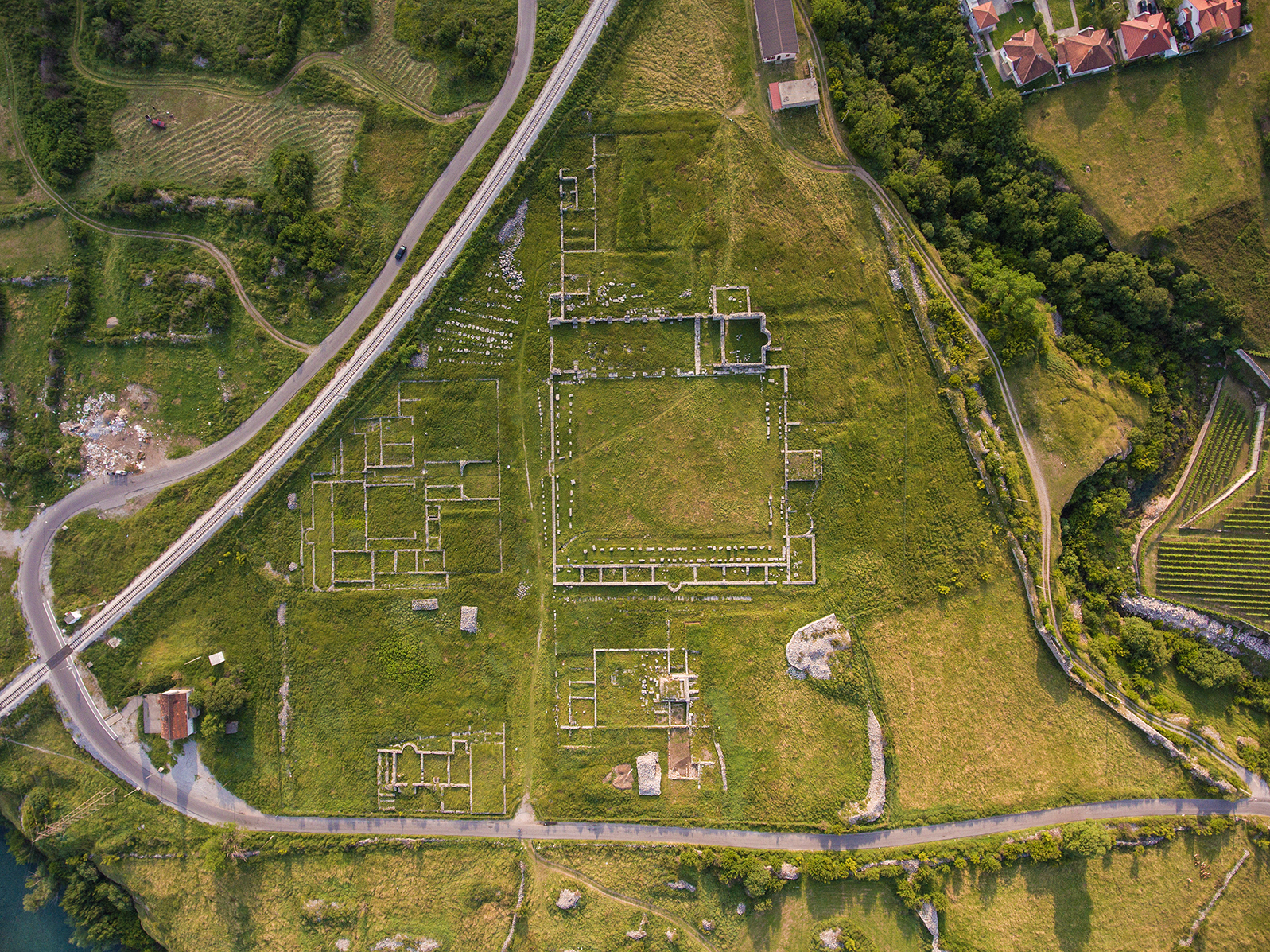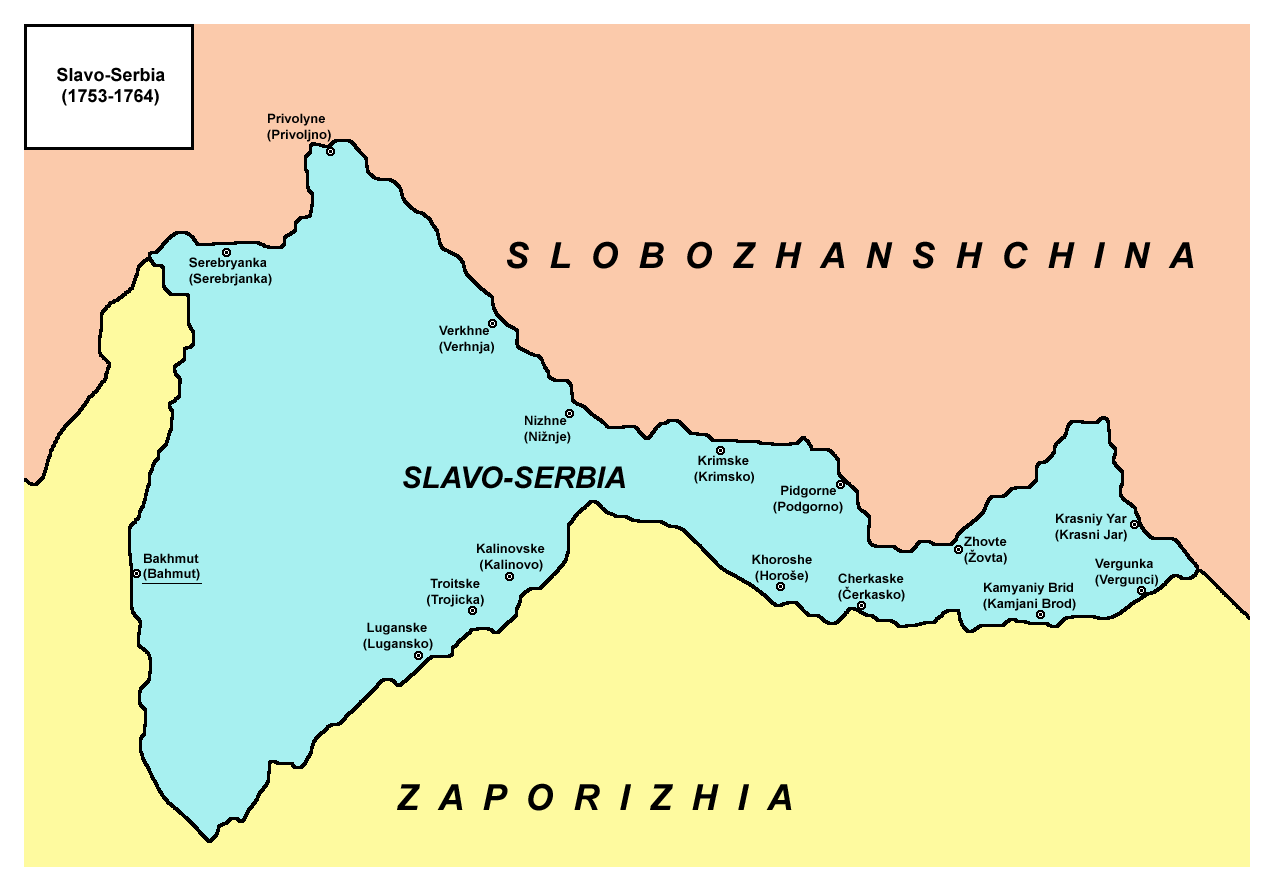|
Jovan Albanez
Jovan Albanez ( sr-Cyrl, Јован Албанез; –d. ) or Ivan Albanez (Serbian, russian: Иван Албанез, uk, Іван Албанез) ) was a military officer of Montenegrin Serb origin who led the first group of colonists from the Military Frontier of the Habsburg monarchy to the Russian Empire in the first half of the 18th century. Early life An ethnic Serb, born in the second half of the 17th century in Podgorica, his real name was Mojsije Mitanović ( sr, Мојсије Митановић, russian: Моисей Митанович). He was originally an Orthodox monk. Russian service Owing to Rákóczi's War of Independence (1703–1711), the position of Serbian militiamen in the Military Frontier of the Habsburg monarchy was endangered. In 1704 the first Serbian attempts were made to offer their services to Imperial Russia in the latter's struggle against the Ottomans. Prior to the beginning of the Russo-Turkish War (1710–11) Russian Emperor Peter the G ... [...More Info...] [...Related Items...] OR: [Wikipedia] [Google] [Baidu] |
Podgorica
Podgorica (Cyrillic script, Cyrillic: Подгорица, ; Literal translation, lit. 'under the hill') is the Capital city, capital and List of cities and towns in Montenegro, largest city of Montenegro. The city was formerly known as Titograd (Cyrillic script, Cyrillic: Титоград, ) between 1946 and 1992—in the period that Montenegro formed, as the Socialist Republic of Montenegro in honour of Marshal of Yugoslavia, Marshal Josip Broz Tito. The city was largely destroyed during the bombing of Podgorica in World War II and accordingly the city is now dominated by architecture from the following decades of communism. Further but less substantial damage was caused by the NATO bombing of Yugoslavia, 1999 bombing by NATO forces. The surrounding landscape is predominantly Mountain range, mountainous terrain. The city is just north of the Lake Skadar and close to coastal destinations on the Adriatic Sea. Historically, it was Podgorica's position at the confluence of the Ribn ... [...More Info...] [...Related Items...] OR: [Wikipedia] [Google] [Baidu] |
Sava Vladislavich
Count Sava Lukich Vladislavich-Raguzinsky (russian: Са́вва Луки́ч Рагузи́нский-Владиславич; sr, Сава Владиславић Рагузински, ''Sava Vladislavić Raguzinski''; 16 January 1669 – 17 June 1738) was a Serbian merchant-adventurer and diplomat in the employ of Peter the Great. He conducted important diplomatic negotiations in Constantinople, Rome and Beijing. His most lasting achievement was the Treaty of Kiakhta, which regulated relations between the Russian Empire and the Qing Empire until the mid-19th century. He penned a number of pamphlets, monographs, treaties and letters concerned with liberating the lands of the Slavs, then occupied by the Ottoman Empire and the forces of Leopold I. Background Sava, named after Saint Sava, was born in 1669, in the village of Jasenik near Gacko, Bosnia Eyalet, Ottoman Empire. His father, Luka Vladislavić, was a Serb landlord. The family was driven out from Gacko by the local Turks ... [...More Info...] [...Related Items...] OR: [Wikipedia] [Google] [Baidu] |
Nikolay Depreradovich
Nikolai Ivanovich Depreradovich (russian: Депрерадович, Николай Иванович; sr, Никола Прерадовић; Novorossiya, Imperial Russia, 23 October 1767 – St. Peterburg, Imperial Russia, 16 December 1843) was one of the most decorated Russian generals who fought against Napoleonic France. He was a general of the cavalry and adjutant general who took part both in Napoleonic Wars and Finnish Wars. His family, with roots in Serbian lands, moved to Imperial Russia in 1752. He played an important role with Illarion Vasilyevich Vasilchikov (1776–1847) in the grand strategy of the Russian Empire after Alexander I ascended the throne. Biography He was a Serb originally from an old border officer's family that moved from what was then part of the Austrian Empire's Military Frontier to Slavo-Serbia in Imperial Russia. His brother, Leontii Depreradovich, came close to achieving the same success if it were not for a scandal that got him dismissed fr ... [...More Info...] [...Related Items...] OR: [Wikipedia] [Google] [Baidu] |
Andrei Miloradovich
Andrei Stepanovich Miloradovich (Russian: Андре́й Степа́нович Милора́дович; 1727–2 May 1796) was a Russian military leader, statesman and lieutenant general. He is the father of general Mikhail Miloradovich. Biography He was born in 1727 in the village of Pozniki in the Chornukhy (that became a centesimal town Lubensky Regiment of the Hetmanate). The Miloradovichs descended from an Eastern Orthodox Bosnian Vlach family and a '' katun'' clan from Hum, in present-day Bosnia and Herzegovina, who rose to a station of prominent Bosnian Ottoman nobility of Sanjak of Herzegovina. The Russian branch of the Miloradovich family was established in 1715, when Mikhail Miloradovich (the first) (Serbian Cyrillic: Михаило Милорадовић), one of three brothers recruited by Peter I to incite rebellion against the Turks four years earlier, fled from Herzegovina to Russia and joined Peter's service as a colonel.Schultz, C. C. (2004). . Taleon ... [...More Info...] [...Related Items...] OR: [Wikipedia] [Google] [Baidu] |
Jovan Horvat
Jovan Samuilović Horvat de Kurtič, also referred to as Ivan Horvat ( sr-Cyrl, Јован Самуиловић Хорват de Куртич, also referred to as ; also known as Jovan Horvat ( sr-Cyrl, Јован Хорват), Ivan Khorvat (russian: Иван Хорват), Ivan Samoylovich Khorvat (russian: Иван Самойлович Хорват), and Ivan Samuilovich Khorvat (russian: Иван Самуилович Хорват); Petrovaradin, Habsburg monarchy, 1722 — Stary Saltiv, near Kharkiv, Imperial Russia, 18 November 1786 [...More Info...] [...Related Items...] OR: [Wikipedia] [Google] [Baidu] |
Jovan Šević
Jovan Šević or Ivan Šević ( sr-Cyrl, Јован Шевић, russian: Иван Егорович Шевич; died ) was an 18th-century military officer of Serb origin. He reached the rank of lieutenant colonel in the Serb militia forces in the Pomorišje region, then in the Military Frontier of the Habsburg monarchy. When it became obvious that privileges granted to Serb militiamen would be reduced or completely revoked after Pomorišje and Potisje lost their frontier status, Šević left Habsburg military service in 1750 and moved to Russia. At the end of 1752, he led the second wave of colonists who migrated from Pomorišje, Potisje and Slavonia to the Russian Empire (modern-day Ukraine) where they settled the newly established administrative region of Slavo-Serbia at the beginning of 1753. To enable him to recruit more of his fellow officers, Šević was promoted to the rank of General by the Russian Empress, Elizabeth. He commanded a Serb Hussar Regiment consisting ... [...More Info...] [...Related Items...] OR: [Wikipedia] [Google] [Baidu] |
Rajko Depreradović
Rajko Depreradović also spelled Rajko Preradović (c. 1710 – after 1764) was a leader of colonists who settled free lands in what is now known as Donbas that were offered for settlement in 1752 to Serbs, Vlachs and other Balkan people of the Christian Orthodox faith to ensure frontier protection and development of the steppes. The settlement was then called Slavo-Serbia. Slavo-Serbia was directly governed by Russia's Governing Senate and College of War. The settlers eventually formed the Bakhmut hussar regiment in 1764. Also in 1764, Slavo-Serbia was transformed into the Donets uyezd of Yekaterinoslav Governorate (now in Dnipropetrovsk Oblast, Ukraine). Commandants of Slavo-Serbia were Colonels Rajko Preradović and Jovan Šević. These Serbian colonels led their soldiers in various Russian military campaigns; in peacetime, they kept the borderlands, along with the Cossacks, free from incursions by other states. Biography Rajko Preradović's ancestors first settled in an area ar ... [...More Info...] [...Related Items...] OR: [Wikipedia] [Google] [Baidu] |
Kingdom Of Serbia (1718–39)
The Kingdom of Serbia ( sr-cyr, Краљевина Србија, Kraljevina Srbija) was a country located in the Balkans which was created when the ruler of the Principality of Serbia, Milan I, was proclaimed king in 1882. Since 1817, the Principality was ruled by the Obrenović dynasty (replaced by the Karađorđević dynasty for a short time). The Principality, under the suzerainty of the Ottoman Empire, ''de facto'' achieved full independence when the last Ottoman troops left Belgrade in 1867. The Congress of Berlin in 1878 recognized the formal independence of the Principality of Serbia, and in its composition Nišava, Pirot, Toplica and Vranje districts entered the South part of Serbia. In 1882, Serbia was elevated to the status of a kingdom, maintaining a foreign policy friendly to Austria-Hungary. Between 1912 and 1913, Serbia greatly enlarged its territory through engagement in the First and Second Balkan Wars— Sandžak-Raška, Kosovo Vilayet and Vardar Macedon ... [...More Info...] [...Related Items...] OR: [Wikipedia] [Google] [Baidu] |
Potisje
Potisje ( sr-cyr, Потисје) is the name of the Tisa river basin parts located in Serbia, in the autonomous province of Vojvodina. The river Tisa flow between Banat and Bačka regions. Municipalities in Potisje Municipalities in Bačka: *Kanjiža *Senta *Ada *Bečej *Žabalj *Titel Municipalities in Banat: *Novi Kneževac *Čoka *Kikinda *Novi Bečej *Zrenjanin History In the 1st century, ancient author Plinius used name ''Pathissus'' to describe a surroundings of the river Tisa. Because of the similarity of this name with modern Slavic name ''Potisje'' (meaning approximately "a land around river Tisa" in Slavic), which is a typical Slavic name used for surroundings of the rivers (like Podunavlje, Pomoravlje, etc.), name mentioned by Plinius might indicate an early Slavic presence in the area.Oleg Trubačov, Etnogeneza i kultura drevnih Slovena, Beograd, 2005. (page 50) Between 1702 and 1751, the western part of Potisje (in the region of Bačka) belonged to the Tisa- ... [...More Info...] [...Related Items...] OR: [Wikipedia] [Google] [Baidu] |
Pomorišje
Pomorišje (Serbian Cyrillic: Поморишје) is a historical geographical region on the banks of the river Mureș (Serbian: ''Moriš'') that in the past has had a sizable ethnic Serb population. The region is mostly divided between Romania and Hungary, with small part of it in northern Serbia. Today, a Serb minority is present in parts of the region that are part of Romania and Hungary. Geography Pomorišje does not have exactly defined geographical borders and term generally defines areas near the river Mureș. Different definitions would provide different views of how far from the Mureș Pomorišje might extend. Sometimes, term could refer to areas on both banks of the Mureș (including northern parts of Banat along the southern bank of Mureș and southern parts of Crișana along the northern bank of Mureș), while sometimes it can historically define only the northern bank of the Mureș, therefore, excluding areas that are parts of the Banat. The region is mostly situated ... [...More Info...] [...Related Items...] OR: [Wikipedia] [Google] [Baidu] |
Old Herzegovina
Old Herzegovina ( sr, Стара Херцеговина, Stara Hercegovina) is a historical region, covering the eastern parts of historical Herzegovina, outside the scope of modern Herzegovina. A large section of ''Old Herzegovina'' belongs to modern Montenegro, while a smaller section belongs to the modern Bosnia and Herzegovina and modern Serbia. All of those regions were parts of historical Herzegovina from the middle of the 15th century until 1878. In modern Montenegro, the region includes the municipal areas of Herceg Novi, Nikšić, Pljevlja, Plužine, Šavnik and Žabljak. In modern Bosnia and Herzegovina, the region includes the municipal areas of Čajniče, Foča, Kalinovik and Rudo. In modern Serbia, the region includes the municipal areas of Priboj and Prijepolje. History The region known today as the ''Old Herzegovina'' was part of historical Herzegovina from the middle of 15th century up to the 1878. Initially it was part of the medieval Duchy of St. Sa ... [...More Info...] [...Related Items...] OR: [Wikipedia] [Google] [Baidu] |
Brda, Montenegro
Brda ( Montenegrin and Serbian Cyrillic: Брда, "Highlands" or "Hills"), is a historical and ethnographical region in Montenegro. The historical tribes of Brda: Vasojevići, Bjelopavlići, Piperi, Kuči, Bratonožići, Morača and Rovčani constituted this region (collectively known as "the seven tribes" or "hills"; Седам племена/''Sedam plemena'' or Седам брда/''Sedam brda'' / Седморо брда/''Sedmoro brda''), known as the Highlander tribes ( Montenegrin and Serbian: Брдска племена/''Brdska plemena''), or simply Highlanders (Брђани/''Brđani''), before the late 19th- and early 20th century and full independence of Montenegro. Geography Today, the Brda region geographically includes the central-eastern, eastern and north-eastern parts of the territory of the ''highlands'' in the higher mountainous Montenegro. The territory is approximately 3500 km², in which ca. 100,000 people live today. The region includes the nor ... [...More Info...] [...Related Items...] OR: [Wikipedia] [Google] [Baidu] |


